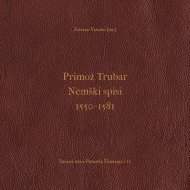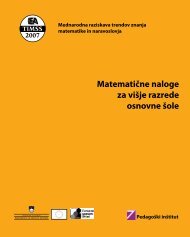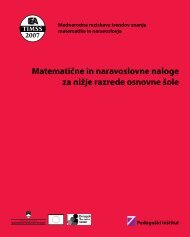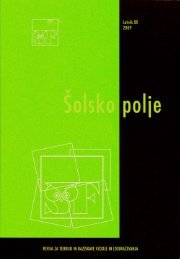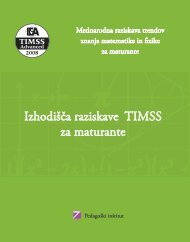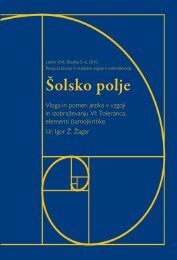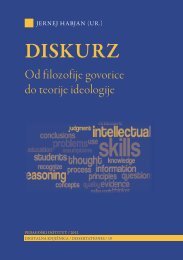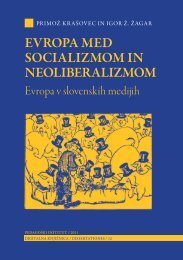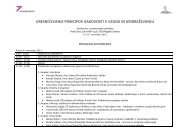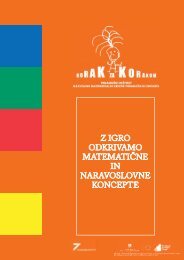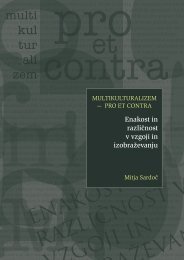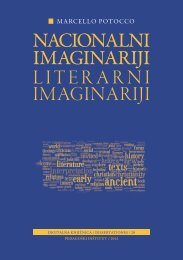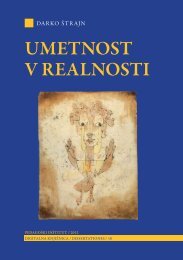Šolsko polje, letnik XX, številka 5-6, 2009: Vloga ... - Pedagoški inštitut
Šolsko polje, letnik XX, številka 5-6, 2009: Vloga ... - Pedagoški inštitut
Šolsko polje, letnik XX, številka 5-6, 2009: Vloga ... - Pedagoški inštitut
You also want an ePaper? Increase the reach of your titles
YUMPU automatically turns print PDFs into web optimized ePapers that Google loves.
JOURNALISTIC (RE)PRODUCTION OF HISTORY: TELEVIZED COVERAGE OF RADOVAN ...97traumatic past and reconcile with it. In that, nostalgia employed by TS’sjournalists exploited popular culture with its entailed “banalities” of everydaylife.Notes[1] Serbian epics has always been a symbol of a national imagination (Čolović,2002). Nationalist discourse wants to establish that a nation has alwaysexisted and in doing so often articulates and reinterpretes already existingdiscourses and other available cultural material, to convey a particular senseof belonging (ibid.).[2] Greater Serbia generally and in this paper specifically refers to the specific ideawithin Serbian nationalism – whose goal it is to unite all Serbs and Serbianlands in one state. Greater Serbia generally and in this paper specifically refersto the specific idea within Serbian nationalism – whose goal it is to unite allSerbs and Serbian lands in one state (MacDonald, 2002).[3] Serbian nationalists name the Muslims in former Yugoslavia »the Turks«(Erjavec and Volčič, 2007). In this example, Bosniaks are called »the Turks«.[4] Also in quantity terms, the largest number of news programs (more than half)has been devoted to the secret life of Radovan Karadžić as Dragan Dabić.ReferencesBernstein, B. (1990). The Structure of Pedagogic Discourse. London: Routledge.Blumler, J. G. and Kavanagh, D. (1999). The third age of politicalcommunication: Influences and features. Political Communication, 16, 2, 209-230.Boym, S. (2001). The Future of Nastalgia. New York: Basic Books.Chouliaraki, L. and Fairclough, N. (1999). Discourse in Late Modernity. Edinburgh:Edinburgh University Press.Čolović, I. (2002). Politics of Identity in Serbia. New York: New York UniversityPress.Davis, F. (1979). Nostalgia, Identity and the Current Nostalgia Wave.Journal of Popular Culture, 11, 4, 414–24.De la Broose, R. (2003). Political propaganda and the plan to create a ‘State for allSerb. Reims: University of Reims.Erjavec, K. and Volčič, Z. (2007). The Kosovo battle. The Harvard InternationalJournal of Press/Politics, 12, 1, 67-86.Erjavec, K. and Volčič, Z. (<strong>2009</strong>). Rehabilitating Milošević. Social semiotics, 19, 2, 125-147.Fairclough, N. (1989). Language and power. London: Longman.Fairclough, N. (1995a). Critical discourse analysis. London: Longman.Fairclough, N. (1995b). Media discourse. London: Arnold.



